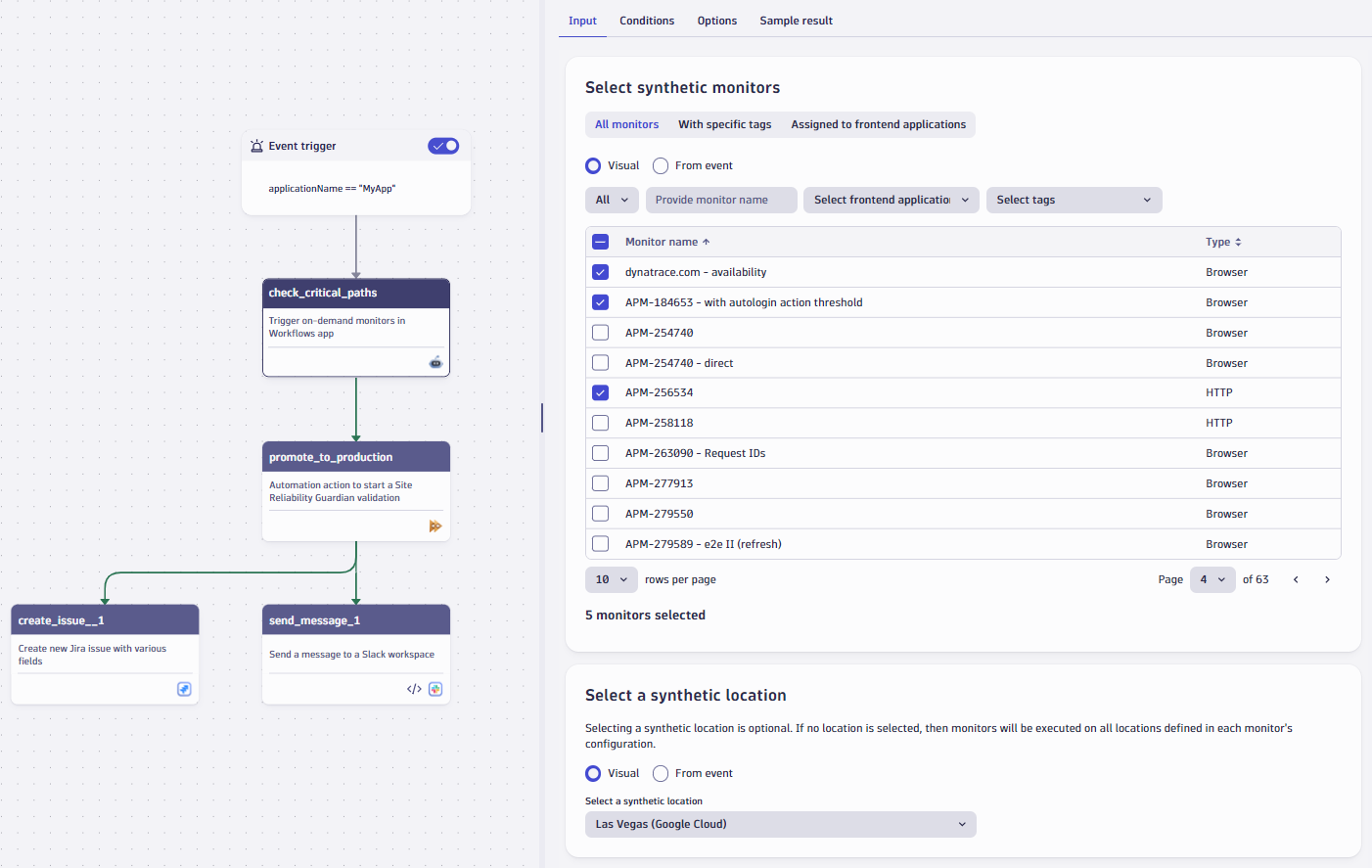Managing IT infrastructure in a rapidly evolving digital environment can feel like playing a Jenga game. Dynatrace® Synthetic Monitoring integrated with visual workflows offers a robust solution for maintaining stability and growth. Dynatrace now combines automation and synthetic monitoring to respond to events, execute monitors, and assess impacts on user experience. This integration supports use cases like automatic release validation, digital infrastructure change validation, and custom synthetic scheduling, ensuring that all modifications meet performance and functional criteria.
Navigate digital infrastructure complexity
In today’s rapidly evolving digital environment, organizations face increasing pressure from customers and competitors to deliver faster, more secure innovations. The complexity of IT infrastructure management continues to grow, and each new application deployment and every change in infrastructure potentially impact user experience.
In some cases, managing your digital infrastructure is like playing Jenga, where the placement of every piece is critical, and the smallest change can destabilize the entire structure. On one hand, the complexity of systems demands precise control; on the other, staying competitive requires frequent updates and rapid service enhancements. This dynamic creates a challenge: keeping the tower stable while continuously adding and removing pieces.

To keep up with current demands, DevOps and platform engineering teams need a solution that can fully embrace and understand complexity, delivering precise answers that enable the creation of trustworthy automation. The effectiveness of this automation relies on the quality of the underlying data. Observability, therefore, has become crucial in DevOps, offering insights into IT infrastructure stability, performance, and user experience. The DevOps Automation Pulse 2023 report notes that 78% of organizations employing observability-driven automation experience faster incident response and resolution times.
Synthetic monitoring enhances observability by enabling proactive testing and monitoring systems to identify potential issues before they quickly impact users. Returning to the Jenga metaphor, synthetic monitoring observes the tower from a distance, from the end user’s perspective, and triggers instability warnings immediately. Incorporating synthetic monitoring and observability-driven automation can greatly streamline the workflow for DevOps teams, allowing for continuous improvements in system reliability and efficiency.
Automation + Synthetic = Perfect match
This is why we integrated Dynatrace Synthetic Monitoring into Workflows. With this enhancement, Dynatrace can respond to any event and execute synthetic monitors within your workflows to assess the impact of events on user experience. Depending on the outcome, workflows can notify your teams by creating a Jira ticket, sending a Slack message, or initiating a remediation process. This enhancement improves reaction time to incidents impacting user experience and simplifies incident management. It reduces the time spent verifying the impact of changes and engages DevOps or platform engineers only when necessary, allowing them to focus on more strategic initiatives.
With the intuitive and easy-to-use web UI of Workflows, you can quickly build automation based on synthetic monitors with just a few steps, thanks to a dedicated Synthetic for Workflows task.
In the first step, you choose which monitors to execute. You have three options:
- Select a fixed list of monitors.
- Provide a list of tags; all monitors with the tags will be selected.
- Provide a list of applications; all monitors associated with those applications will be selected.

You can also provide a list of monitors, tags, or applications in the incoming event and extract the list using an expression, which allows you to build a generic workflow.

Use case: Automated release validation
Integrating Dynatrace Synthetic Monitoring into delivery pipelines is a strategic move that ensures all critical user journeys are validated as early as possible, whether a release involves minor bug fixes, updates to a microservice, or an entire monolithic application.
This integration is particularly valuable in progressive delivery models like canary deployments. In such scenarios, a new version of an application is initially rolled out to a small portion of users. By adding a synthetic user as “user zero,” the risk of negatively impacting real users is significantly reduced.
Combining Synthetic for Workflows with Site Reliability Guardian (which evaluates adherence to availability, performance, or security objectives based on synthetic results) automatically determines whether the given application version should proceed in the delivery pipeline. This integration facilitates the easy construction and implementation of solutions that enhance automatic release validation.

Use case: Digital infrastructure change
The problem is not always in the application. As illustrated by the Jenga game metaphor, even minor changes in complex infrastructure can topple the entire tower. In 2021, Facebook and its other platforms, Instagram and WhatsApp, experienced a major outage. This global outage lasted for several hours and affected billions of users worldwide.
Interestingly, the applications were functioning perfectly; the root cause was a configuration change in the backbone routers.
Incorporating synthetic monitoring directly into deployment pipelines ensures that every infrastructure modification—regardless of scale—is automatically validated against performance and functional criteria.
This integration is particularly valuable within GitOps frameworks, where infrastructure changes are managed through code and deployed automatically. Synthetic monitors can simulate API clients and mimic user behavior, enabling IT teams to evaluate the impact of changes. Such preemptive testing significantly reduces potential downtime and mitigates performance degradation.
Synthetic for Workflows and Site Reliability Guardian can—continuously or on-demand—verify that all infrastructure modifications meet SLOs from the perspectives of users and API clients.
Use case: Custom synthetic scheduling
The traditional approach to scheduling synthetic monitors involves fixed intervals, which don’t always align with the varying operational demands of modern digital environments.
Workflows in Dynatrace provide a powerful mechanism for triggering tasks in response to various platform events. By leveraging Synthetic for Workflow combined with this event-driven architecture, you can achieve a level of customization in scheduling synthetic monitors that goes beyond the capabilities of the built-in synthetic scheduler.
This flexibility is particularly useful in scenarios where operational conditions can change rapidly. For instance, if a peak load period triggers a test failure, Synthetic for Workflow can initiate retries until the load stabilizes. This retry logic can help triage the problem and ensure that monitoring results are accurate and reliable.
Conclusion
By integrating Dynatrace Synthetic Monitoring with Workflows, Dynatrace offers a comprehensive solution for evaluating the impact of infrastructure changes, enhancing release validation, and improving custom scheduling. However, utilizing Synthetic for Workflows extends beyond these use cases, enabling the easy construction of any automation based on synthetic monitors, where assessing the impact on user experience is crucial.



Looking for answers?
Start a new discussion or ask for help in our Q&A forum.
Go to forum